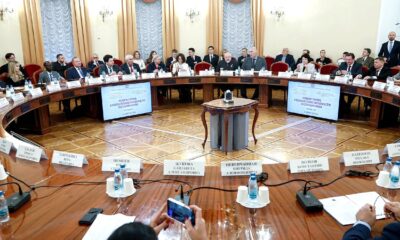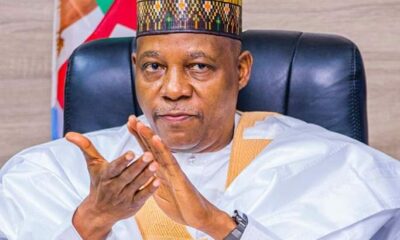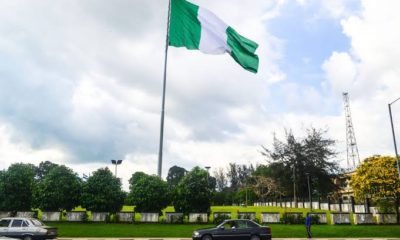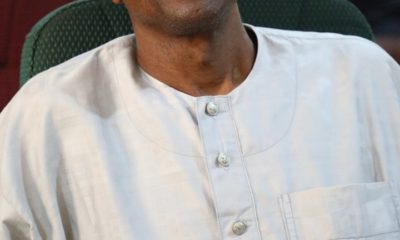Forgotten Dairies
Katsina’s Bet on Innovation and Why It Matters for the North -By Aliyu Sulaiman Babasidi
If the state maintains this pace, it will not only diversify its economy. It will also demonstrate how northern states can blend tradition with modern technology to create something sustainable. There is no reason a state with such a large youth population cannot lead the next wave of digital entrepreneurship in Nigeria. Katsina is already making that argument. What happened during the ISN visit is only one sign among many. The real story is that the state is no longer waiting for the future. It has started laying its own foundation for it, one policy, one institution, and one young innovator at a time.

Sitting in the banquet hall of the Katsina State Government House during the state dinner held in honour of the executives of the Innovation Support Network on Friday, it struck me that what was unfolding that evening was much more than a colourful reception for visitors. It was a quiet but unmistakable statement. Katsina State is no longer content with being described as a place locked in old narratives. The state is positioning itself as a serious competitor in the world of creativity, innovation and digital problem solving. And right at the centre of this shift is Naufal Ahmad, the young but deeply focused Director General of the Katsina Directorate of Information and Communications Technology. His work is a reminder of what becomes possible when government backing, institutional clarity and youthful imagination meet in one place.
The hosting of the Innovation Support Network gathering, which came immediately after their activities in Kano, marked an important moment for Katsina. It announced a new chapter for a state long viewed through the narrow lens of agriculture and federal allocations. What many people have not noticed is that Governor Dikko Umar Radda has been quietly pushing a different economic philosophy. By creating KATDICT and signing the first subnational startup law in Nigeria, he has laid the kind of legal and institutional foundation that innovation ecosystems usually depend on. These types of reforms rarely trend on social media. Their value reveals itself gradually as more young people get trained, more startups form and more digital enterprises begin to take root in communities that used to have few such opportunities.
This shift has cultural meaning as well. For decades northern Nigeria has talked about the potential of its youth population. But potential without structure usually becomes frustration. Katsina is beginning to look like an outlier. Hubs like LUMILAB and Kirkira are building real communities of creators and skilled young people. The state government is not hovering from a distance. It is providing policy support, physical infrastructure and institutional legitimacy. It is in this space that Naufal Ahmad’s work becomes most visible. As a young person who understands the language and urgency of the innovation community, he is creating a bridge between digital governance and youth enterprise. He is proving that technology in government does not need to be a ceremonial buzzword. It can actually reorganize how people solve real problems.
One area where this is already happening is security. Katsina’s security challenges are well known and heavily discussed. What is less talked about is how technology is becoming part of the state’s response. Through data tools, communication platforms and reporting systems, KATDICT is quietly supporting a more coordinated security environment. Digital infrastructure helps communities report faster, agencies respond quicker and the state track incidents with more precision. This is not a silver bullet but it shows that innovation is not only an economic strategy. It is becoming an operational necessity. In a state navigating complex security pressures, these improvements matter.
When the Innovation Support Network delegation visited Katsina, they encountered a state that looked different from the familiar stereotype. They saw young creators who were sure of their abilities. They saw innovation hubs that were not improvising but actually building structured ecosystems. They saw a government that did not treat innovation as a weekend hobby. Most importantly, they saw a state that is attempting to take control of its own future rather than waiting for national events to shape it.
Katsina is not trying to copy Lagos or rebrand itself as the next Abuja. The state is building a pathway shaped by its culture, youthful energy and long term economic goals. Innovation does not grow because of motivational speeches. It grows when institutions are funded, when hubs are supported and when young people are treated as contributors rather than spectators. Governor Radda has shown a quiet but firm willingness to back this approach. The results are already beginning to show. The confidence level within the innovation community is increasing. Engagement from national bodies like ISN is rising. And the ambitions of Katsina’s young creators are moving away from hesitation and closer to genuine possibility.
If the state maintains this pace, it will not only diversify its economy. It will also demonstrate how northern states can blend tradition with modern technology to create something sustainable. There is no reason a state with such a large youth population cannot lead the next wave of digital entrepreneurship in Nigeria. Katsina is already making that argument. What happened during the ISN visit is only one sign among many. The real story is that the state is no longer waiting for the future. It has started laying its own foundation for it, one policy, one institution, and one young innovator at a time.










